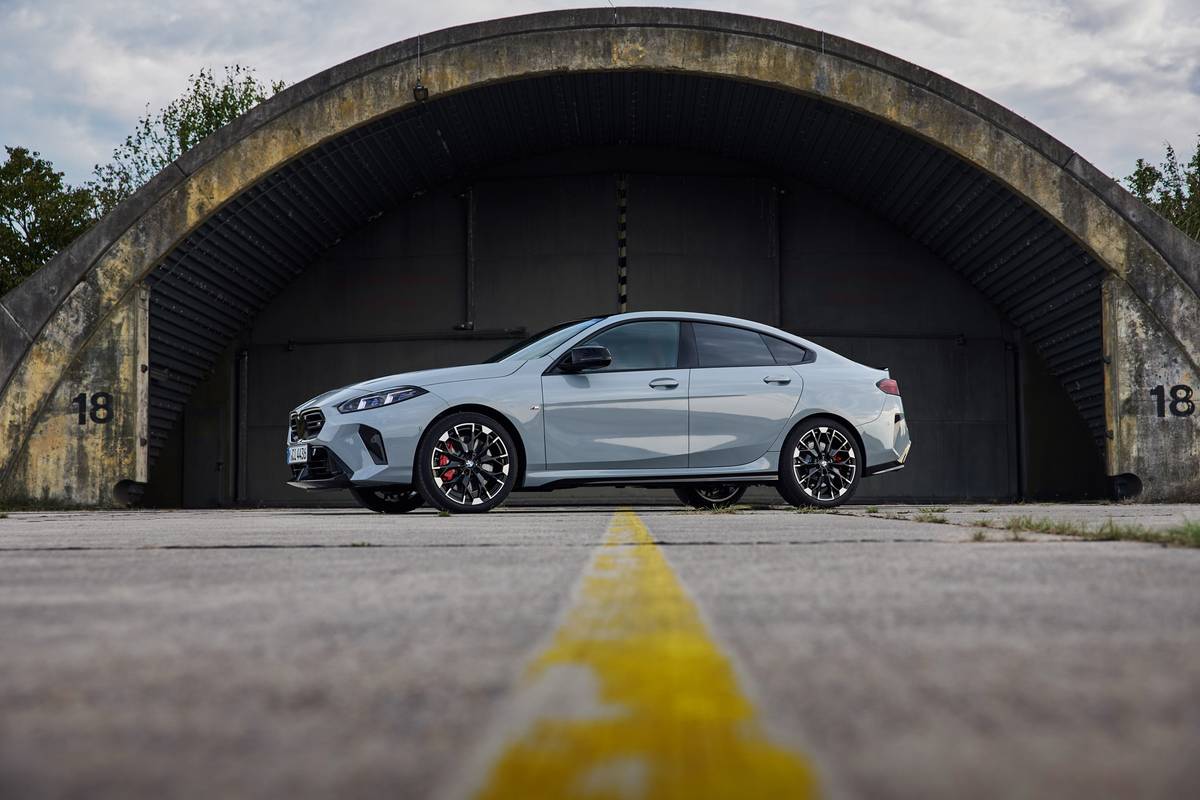IndyStar.com's view
Pontiac Motor Division made one of its better moves years ago when it borrowed the title Grand Prix from European road racing circuits and put it on one of its automobiles.
Ever since, Pontiac Grand Prix models have stood for something a little extra in the way of motor cars, and it is a tradition carried forward in the 1993 series.
Available in either coupe or sedan form, the ’93 Grand Prix continues to be a jazzy set of wheels designed to be many things in serving many needs. The model can be just about anything you want it to be.
Just choose body style, powertrain and equipment and a driver can virtually tailor the automobile to what he or she specifically wants.
The basic engineering and styling of the ’93 Grand Prix are a carryover from the 1992 car. Considering that so is the price, it might be considered not too bad a deal.
The LE sedan has a base price of $14,890, the same price that was on the ’92 four-door. That’s $500 less than the lowest priced Grand Prix coupe.
Something for everyone
Not all Grand Prix drivers are in the market for a two-door, hence Pontiac’s offering of a sports-oriented automobile in sedan form. But just because the car is a four-door doesn’t mean it has to be a plain-Jane automobile.
An LE sedan with a moderate amount of options is anything but plain-Jane. The four-door has slick aerodynamic styling that fundamentally is a sister to the coupe. Inside the standard interior features are identical to the coupe. And if equipped with a sports appearance package, the car possesses a sporting theme that is comparable to first-class international-type touring models.
This sports appearance package was in the Grand Prix LE that Michael G. Healy, partner in the Don Sisk Pontiac agency, provided for a test car. The result gave the sedan a distinctive flair for light-hearted motoring.
The package, however, made a five-passenger automobile out of the Pontiac, as bucket seats and a center console replace the standard 45/55 split-bench seats. But for those drivers who don’t need a full front seat to carry mom, the kids, and a big dog the buckets are the way to go.
They give a sports-oriented four-door a classy look that is the equivalent of the upscale Grand Prix STE model.
There also was accessory componentry contained in the sports appearance package that had a decided effect on the way the LE drove. Instrumentation in the test car consisted of full rally gauges with a tachometer. And keeping contact with the pavement were wide tread P215/60R16 GT Eagle tires mounted on 16-inch wheels.
For someone who wants to work at being a driver, the additional lower aerodynamic treatment and split dual exhaust segments of the package may be nice. But it’s the gauges that let you know what is going on with the machine, and the wide rubber keeps it on the road.
A pleasant ride
The test car had Pontiac’s 3.1-liter V-6 and standard suspension, rather than a stiffer rally-tuned suspension available o nly when the Grand Prix is packing an optional 24-valve, 3.4-liter V-6.
The suspension was prone to traces of moderate amounts of body lean in fast turns. However, the trade-off in the pleasant ride was more than compensation for any lack of being able to play road racer. And at all times the front-wheel drive was stable and exhibited good road-handling characteristics.
The 3.1-liter V-6 obviously isn’t going to out-muscle the 3.4 engine with its four overhead cams and four valves per cylinder. There is a little matter of 60-horsepower between the two, with the 3.1 producing 140 horses and the 3.4 being rated at 200 horsepower.
But for overall operation as a combination sports/utilitarian sedan, the LE with the 3.1-liter V-6 was quite capable of good, if not blazing, performance. Acceleration coming onto the interstate or making a pass quickly put the car into motion, with the engine pulling strongly all the way.
As a car that would be used every day, the sedan virtua lly was w ithout fault. Although it was a ’93, the test car had switches, buttons and the like that have been General Motors’ standard fare for some time. A first drive was like being with an old friend.
A $1,682 value equipment package that contained the power accessories, tilt, cruise, and AM/FM stereo and other convenience items didn’t give one much more to do than steer. But the steering itself took a bit of extra effort.
Those wide tread P215 tires had such a grip on the pavement that when going slow they raised the effort needed to turn the steering wheel. Possibly the engineering people might raise the pressure in the power steering system a bit to offset this.
Even though the exterior dimensions of the Grand Prix coupe and sedan are virtually identical, there is more room in the four-door than in the two-door. Wheelbases are identical and the sedan is one-tenth of an inch longer.
But the rear seat legroom in the sedan is 36.2 inches to the coupe’s 34.8 inches, and there is correspondingly greater front seat legroom and front and rear headroom in the four-door.
This all contributed to comfort and roominess in the test LE, and gave the impression it was as much of a family car as it was a sports- oriented car.
The Grand Prix LE with its 1993 model continues as the class act that has been the mark of predecessor versions. With certain reservations, it represents Pontiac’s ’93 slogan, “We Are Driving Excitement.”
Latest news



